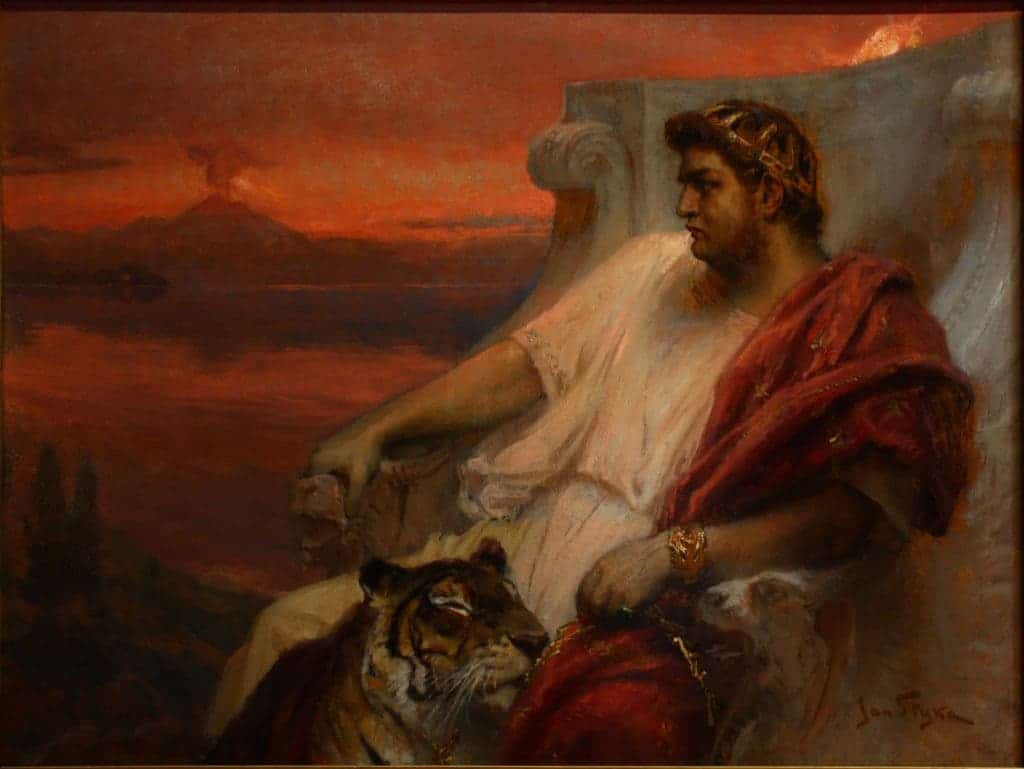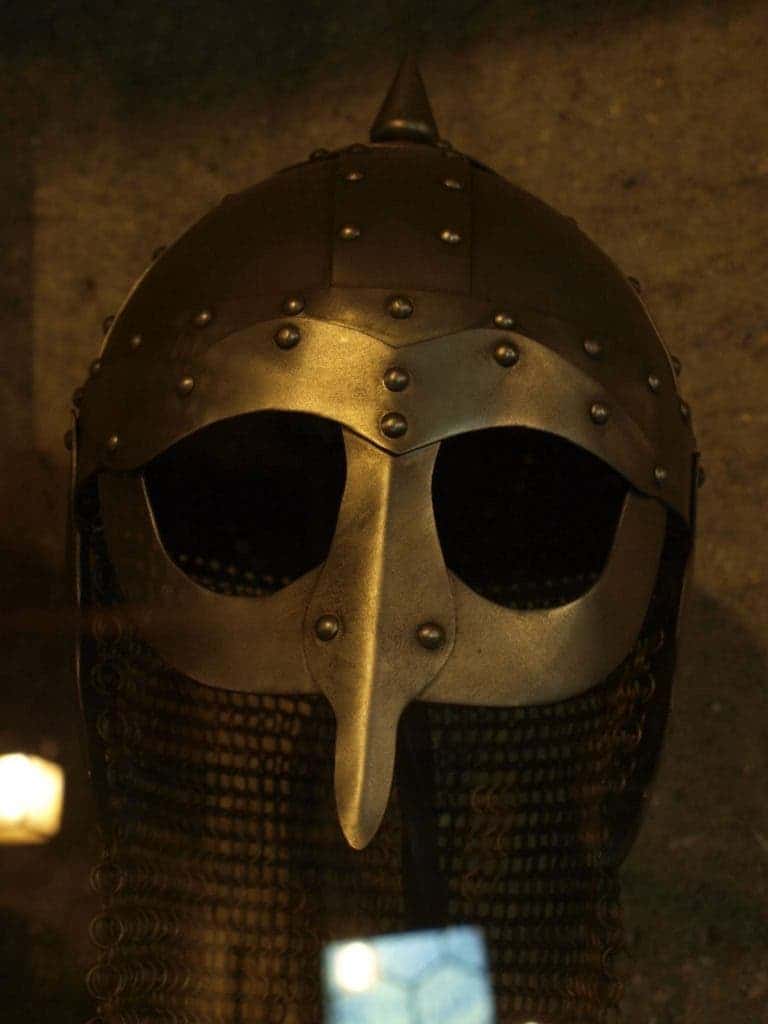History is a mishmash of real facts, exaggerations, and downright lies, and sometimes history is just something repeated over and over until people start believing it. It’s very easy to get tricked into believing something that’s just not true – here we’ll be taking a look at this type of thing. Historical myths that aren’t true but just won’t go away (also check out our science misconceptions).
Medieval scholars thought the Earth was flat

The shape and size of the Earth were calculated with astounding precision by Eratosthenes in Ancient Greece and were known pretty well (at least by the educated elite) through the Christian age. The idea that Medieval scholars thought the Earth was flat appears to date from the 17th century as part of the campaign by Protestants against Catholic teaching, gaining much traction in the 1800s due to inaccurate stories and historical recollections such as William Draper’s History of the Conflict Between Religion and Science (1874). Furthermore, when Columbus sailed forth the Atlantic, he didn’t do so because he was the only one who realized the Earth was round – he just thought the Earth was much smaller than it really was.
Ninjas wore only black

Ninjas were spies, assassins and covert agents – it wouldn’t make much sense for them to wear something that would immediately give away their goals. They usually dressed as everyday folk or as other samurai. The popular idea of the black clothing wore by ninjas was probably borrowed from the puppet handlers of bunraku theater, who dressed in total black to simulate props moving independently.
However, ninjas were specialized in ambushes and quickly infiltrating and escaping areas at night, but even when they did use dark garments, they used dark blue and not black, because it blends better in the night. The Japanese Mikawa Go Fudoki describes a case of deception when ninja attackers used the same clothing as defenders, to instill confusion.
Nero fiddled while Rome burned

Some history books would still have us believe that the Roman Emperor Nero started the Great Fire of Rome in 64AD and then fiddled while the city burned. First of all, violins weren’t even invented back then, so at most, Nero would have played his lyre, but that’s also highly unlikely. Nero had more than his fair share of faults and some historians still blame him for the fire (either on a whim or to blame the Christians).
Unfortunately, original recollections of the fire from Fabius Rusticus, Cluvius Rufus and Pliny the Elder are lost. Tacitus, a Senator and historian of Rome, states that Nero was out of Rome when the fire started. He did use the fire to his advantage, though, blaming the devastation on the Christian community and starting persecutions against them.
“Let them eat cake”

Quite possibly the catchiest phrase in history, “Let them eat cake” is the traditional translation of the French phrase “Qu’ils mangent de la brioche,” misattributed to Marie Antoinette during one of the famines that occurred in France during the reign of her husband, Louis XVI. The phrase carried great symbolic significance, highlighting the disregard of the French nobility towards the hardships of the people.
Not only is there no historical evidence to support this, but Marie Antoinette was by all accounts a generous person moved by the plight of the poor when it was brought to her attention. Furthermore, despite many shortcomings, there were no famines during the reign of Louis XVI, and Marie wasn’t even in the country when the story emerged.
The pyramids were built by slaves

Slaves didn’t build the pyramids of Egypt. The ancient Greek historian Herodotus once described the pyramid builders as slaves, propagating what became a global myth. Workers were likely poor people, but they were respected – pointed out by archaeologists who found their graves around or even inside the pyramids. There’s no way they would be respected enough to be buried as slaves there.
Another myth regarding the pyramids is that they haven’t changed since their construction. Initially, the great pyramids were covered with white limestone plated with gold – that outer coating has since washed away.
Vikings had horns on their helmets

When you think of a Viking, the image of a horned helmet almost immediately pop up, but that’s almost certainly not true. The image of Vikings wearing horned helmets was again borrowed from art – from the scenography of an 1876 production of the Der Ring des Nibelungen opera cycle by Richard Wagner.
Another myth about Vikings is the memorable event when King Canute in an alleged fit of delusional arrogance ordered the tides to retreat. Much more likely is that he was actually trying to make a smart point to his people – showing them that no one can command nature and no man is all powerful.
Benjamin Franklin discovered electricity

Benjamin Franklin made numerous scientific and political contributions in the world, but he didn’t discover electricity. Egyptian scholars wrote texts in 2750 BC referring to electric fish as “the thunderers of the Nile,” and several Mediterranean cultures were aware of static electricity. However, the first proper electrical study was conducted in 1600 by the English scientist William Gilbert who actually coined the term “electricity.”
Benjamin Franklin had numerous contributions in the field, notably demonstrating the electrical nature of lightning using his famous kite experiment, at one point selling much of his possessions to fund his work.
Chastity belts weren’t a Medieval thing
There’s a great deal of speculation about Medieval devices like chastity belts. Almost all devices existing today are either fakes or anti-masturbatory devices from the 19th or 20th century, when there was a widespread belief that masturbation could lead to insanity.
In 1878, Doctor John Harvey Kellogg — best known for the invention of the famous breakfast cereal Corn Flakes — was an advocate of complete abstinence, citing another doctor (Adam Clarke) and stating that “neither the plague, nor war, nor small-pox, nor similar diseases, have produced results so disastrous to humanity as the pernicious habit of onanism.” Apparently, Medieval people knew better. Speaking of that…
People in the Middle Ages didn’t only live until 30
While it is true that that life expectancy was much lower back then, the statistic is highly skewed by high infant mortality, and the life expectancy of people who lived to adulthood was much higher. A 21-year-old man in medieval England, for example, could by one estimate expect to live to the age of 64.
Roman Vomitoriums weren’t used for vomiting

Despite its rather unfortunate name, a vomitorium was simply a passage situated below or behind a tier of seats in an amphitheater or a stadium. They were usually big so large crowds could exit quickly.
There was never a “Ye” in Old English

You often come across a “Ye” instead of “The” usage in Old English texts or references – but people didn’t really say “ye” — they still said “the”. The confusion comes from the use of the character thorn (þ) in abbreviations of the word “the“, which in Middle English text looked similar to a y with a superscript e.


